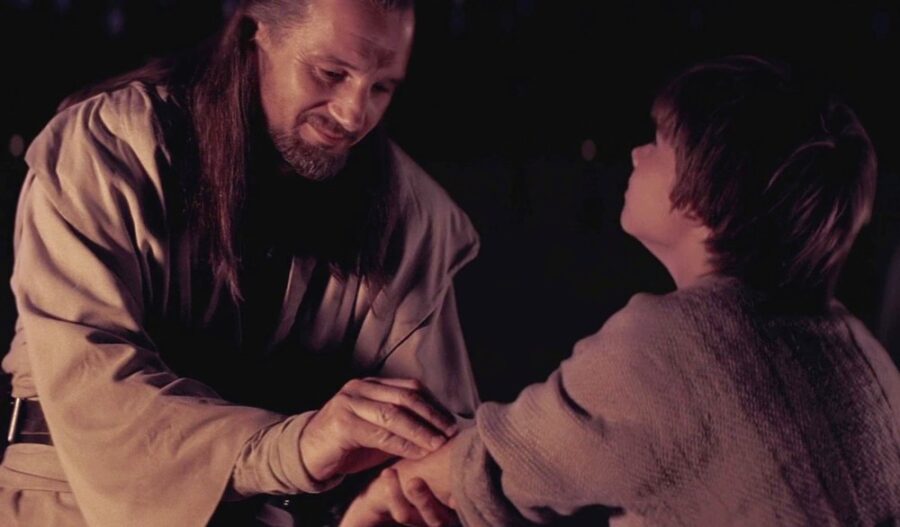The Star Wars Prequel Argument Everyone Gets Wrong

When Star Wars prequel The Phantom Menace came out, it gave fans plenty to complain about. Complaints ranged from new characters being awful (we-sa talking about you, Jar-Jar) to the acting being wooden (sorry, Jake Lloyd, but it’s true). Still, the biggest complaint was about George Lucas introducing midichlorians to the franchise as a way to detect and measure someone’s Force potential.
Fans thought this took away from the magical mysticism of the Force. However, here’s something that may surprise you: the franchise had already canonically introduced the same basic idea of Force detection in the Jedi Academy trilogy of books years earlier.
Force Detectors Pre-Date The Prequels

A full half decade before George Lucas introduced midichlorians to Star Wars, Kevin J. Anderson’s 1994 book Jedi Search introduced a special technology known simply as a “Force detector.” In the Star Wars EU, this technology is supposed to be one of the ways that Emperor Palpatine’s Jedi hunters could find and destroy remaining Jedi and potential Jedi throughout the Galaxy.
In practice, this device was non-invasive: by placing the paddles on either side of a person, users like Luke Skywalker could then measure whether they could use the Force as well as the potential limits of their abilities.
A Tool Of The Empire

At the time, the introduction of this technology didn’t shock fans when it was canonically introduced as part of the Star Wars EU. It made plenty of sense that a technology-loving bad guy like Emperor Palpatine would have devised a tool to help him continue the extermination of the Jedi, and it made just as much sense that Luke Skywalker would use that tool to help him find and recruit new Jedi throughout the galaxy.
But when the same concept was introduced in The Phantom Menace five years later in the form of midichlorians, the fandom collectively lost its mind.
How Midichlorians Function

The way the midichlorians work is relatively simple: they are microscopic organisms present in all living creatures, and they work to connect those creatures to the Force. Most people can’t use the Force because they are unaware of these organisms, and even if they were aware, most living creatures don’t have enough midichlorians to let them command the Force. Conversely, the presence of a larger number of these organisms (like was found in both Yoda and Anakin Skywalker) serves as a great predictor of someone’s Force potential.
Determined Who Was Trained As A Jedi

In his novels, Kevin J. Anderson wasn’t quite as precise about how his Force detector worked: if someone had a blue corona around them during a scan, it meant they could wield the Force, and he later tells Kyp Durron that it “maps the potential of your senses.” Though it is nothing we see onscreen, it sounds like the Jedi have a kind of informal amount of midichlorians to determine if somebody is worth the time and effort to properly train.
The Force Is Usable By A Select Few

In retrospect, the Force detector was probably like that as well. Even though the Force is created by all living things, only a select few users could command it, and that was who got the blue corona. The Force still existed in others, but as Luke points out, not everyone’s “senses” have the “potential” for that person to become a Jedi.
Don’t Blame The Prequels

After Disney bought Star Wars, they pulled the plug on the EU, officially removing the Force detector from the canon. Meanwhile, midichlorians remain a canonical way to detect and measure Force potential, and fans continue to blame the Prequel Trilogy for taking the magic out of Star Wars. However, in the kind of cosmic irony that would make Yoda do that freaky little giggle, an overlooked Star Wars book beat The Phantom Menace to the punch by five years when it came to using science and technology to detect the Force.












